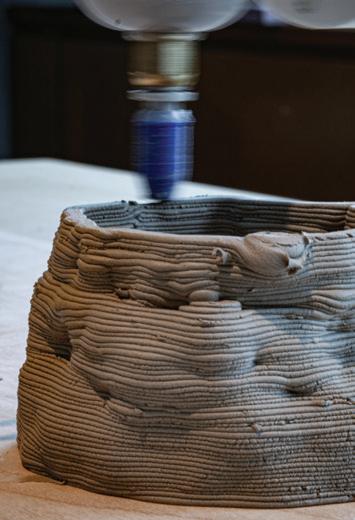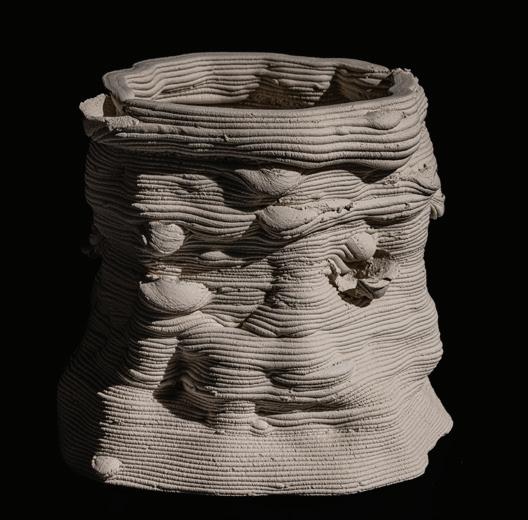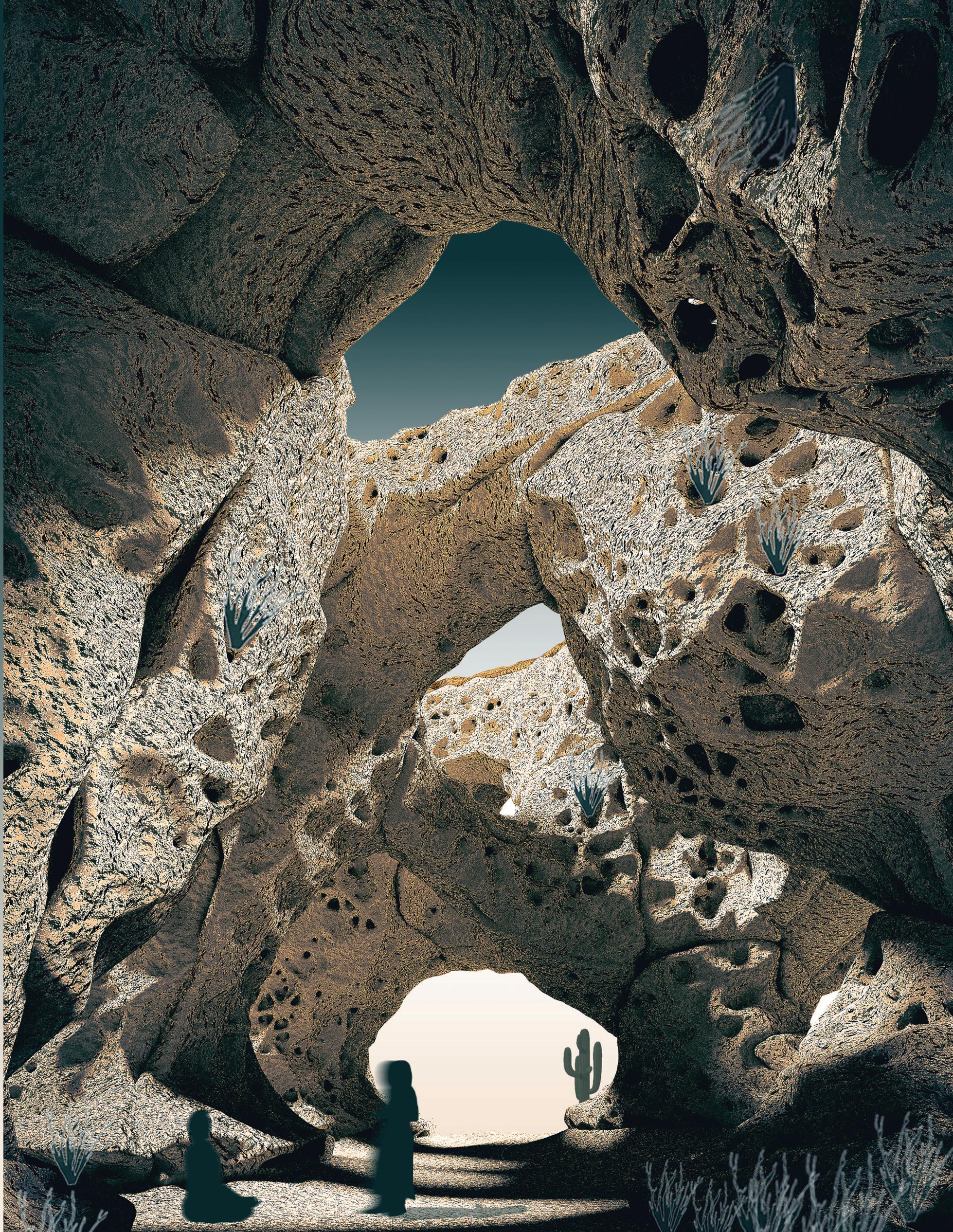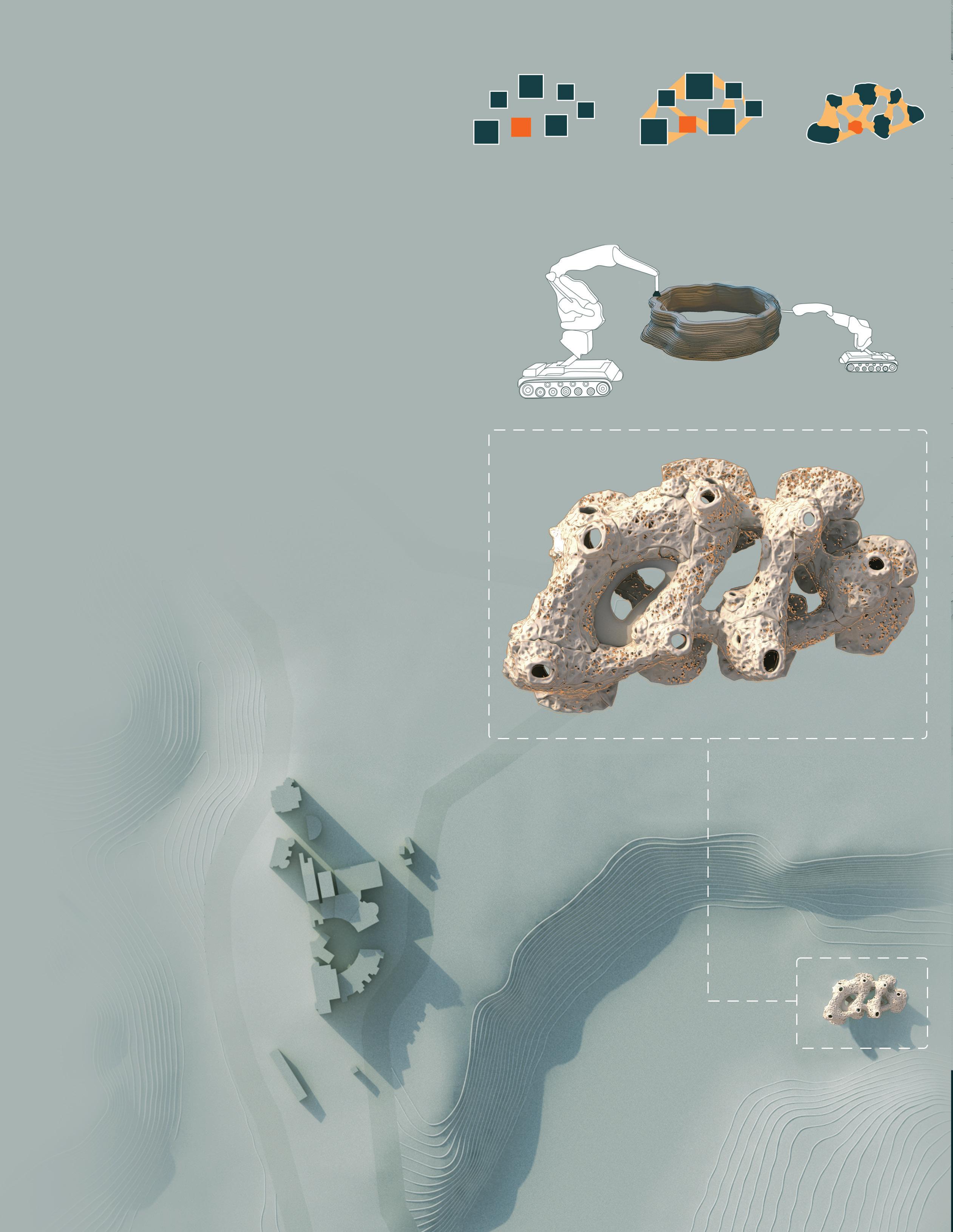
1 minute read
AUGMENTED DESERT LANDSCAPE An Exploration of Tectonic Articulation
Joel Cardenas, Nicolas Fuertes and Shyanne Sonnenberg
In this intervention geological transformation processes such as erosion, weathering, and compaction, are reinterpreted to generate ecologically-oriented dwellings. The intervention seeks to leverage both the utilitarian and aesthetic qualities of the site’s existing soil substrate to produce ecological and unique dwellings. These dwellings confidently rise from, and give it order to the valley transforming matter into inhabitable space. Highly engineered robotic deposition and carving techniques constuct the dwelings thereby allow for the expression of fabrication logic while also retaining a textural imprint, or geologic memory, of the surrounding landscape.
Advertisement
The project’s complex procedural texturing is akin to the sedimentation and erosion that are emblematic of the desert landscape. The chronology of the weathering process is collapsed into the realm of representation, the desert’s temporal qualities, its memories, are thus translated into a unique and tangible morphology.1
It is important to note that this project does not aim to reproduce its immediate surroundings nor to neatly embed architecture within its context. Instead this project is about systemic formation of tools that abstract, reinterpret, and augment context. The project aims to generate a logic that is adjacent to yet autonomous from the Arizona desert. This separation provokes a heightened sensory awareness that enhances users’ relationship to the desert’s natural environment. This approach aims to express the immensity, roughness, and sacredness of the desert, thus situating the intervention in an ambiguous position between nature, architecture, and landscape.
Technical: The form is informed by a desire to maintain a cool interior environment. Air shafts circulate air and configure the structure’s program by vertically accomodating inhabitants. Both the tapering bases that anchor the building and the connecting pathways create valuable shade in the common area below.
Symbolic: The underbelly of the dwellings offers a space of interiority and silence, a space that celabrates the scale and sacredness of desert landforms.
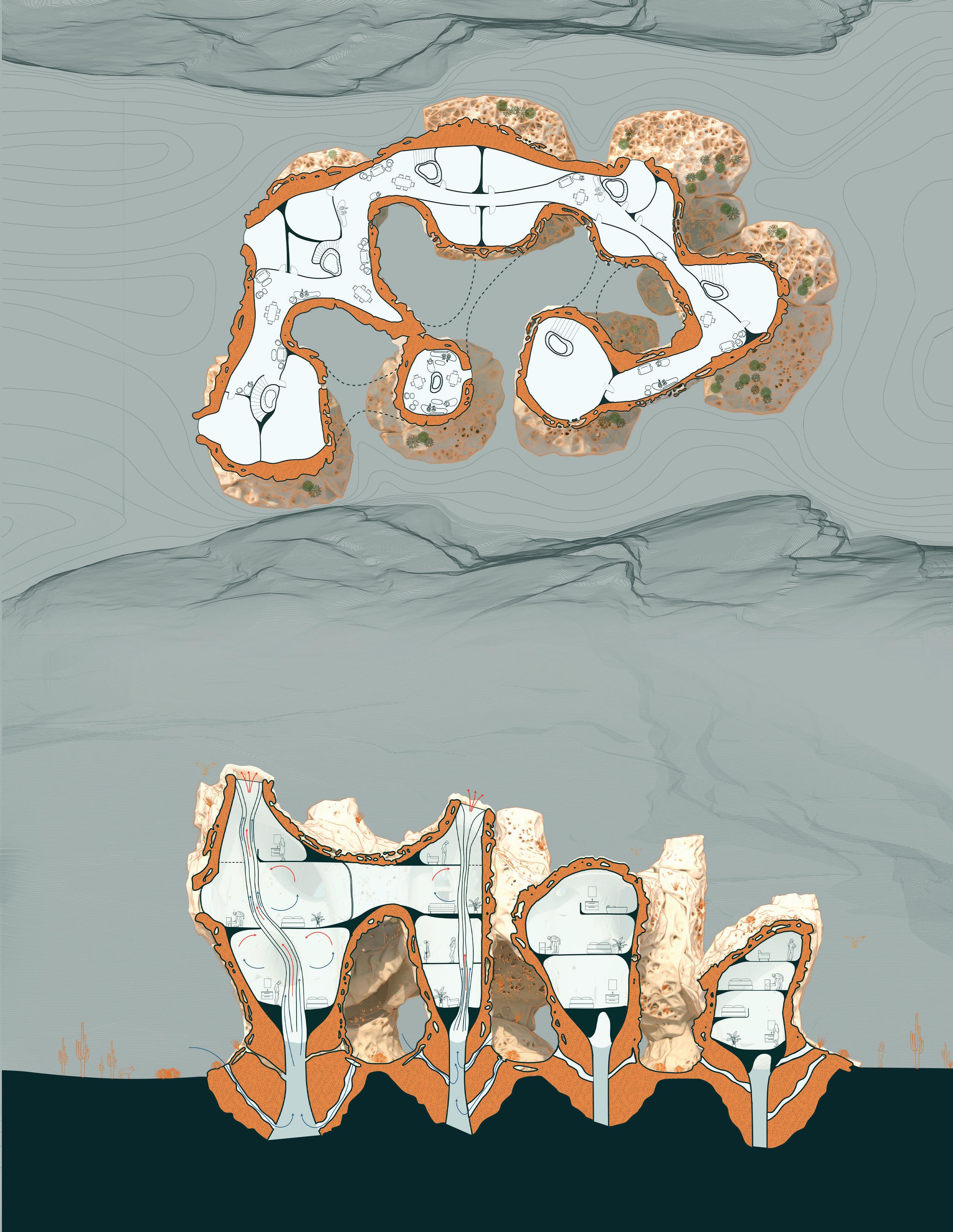
Technical: The applied texturing is designed to respond to incoming solar radiation. The roughness in texture creates a selfshading condition that reduces heat gain. Additionally, the texturing offers opportunity for cohabitation.
Symbolic: Complex geologic texturing is akin to the sedimentation and erosion that are emblematic of the desert landscape. The chronology of the weathering process is collapsed into the realm of representation

Precedent: Self-shading cacti skin and cappadocia’s caves
Robotic Simulation Printing
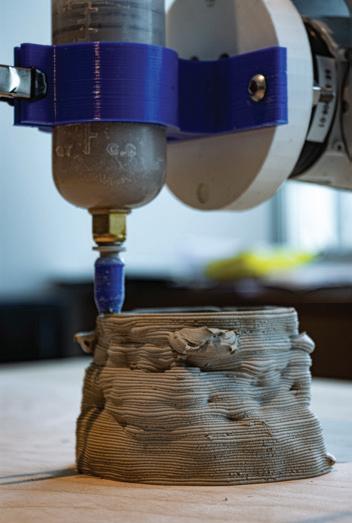
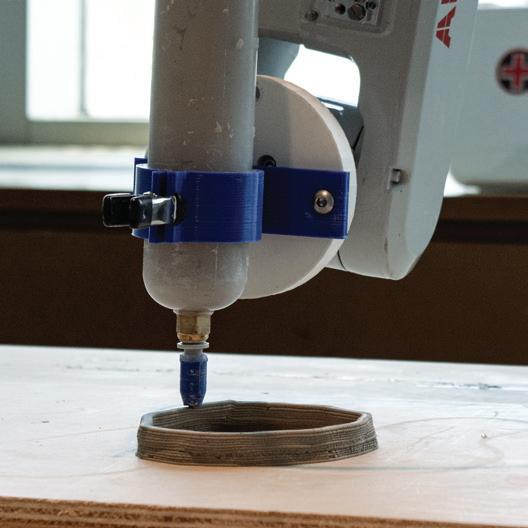

Through the process design one of the challenges was to clay print a small scale model. The idea behind was: if we are able to produce a physical object of this complex form without the use of erosion and beign based only through digital techniques/machines, its predicatable that in a future we can produce larger model with future technology.
